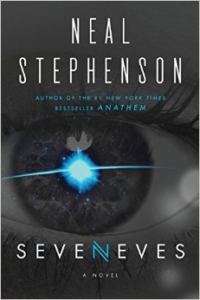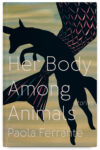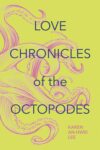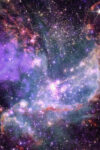Seveneves, Neal Stephenson’s newest sci-fi tome, explores the ability of the human race to survive a banishment from the surface of the Earth due to thousands of years of raining meteors. Rather than science fiction which takes readers to far away galaxies, Stephenson’s novel orbits around our own little home, never taking its readers farther away than the moon. Seveneves is the sort of hard science fiction that is so thoroughly researched, imagined, and executed that it becomes impossible for the lay-reader to discern where peer-reviewed knowledge stops and speculation begins. Continuing with the style that made him famous, Stephenson’s project of seven years builds its realism from sheer abundance of detail.
Brimming with technical enthusiasm, Seveneves’ doubts lie with humans themselves, not with the machines that they operate. Politics and culture prove more potent forces than zero gravity (perhaps that’s not surprising . . .) on the potential for survival. Initially, the space “ark” is envisioned as free from politics. No politicians are allowed to send themselves or their families to the rapidly expanding international space station, “Izzy.” The antics of the governments below are only the unpleasant pixels of a skype conversation. Yet, when the last ship from Earth arrives carrying what was all-too-recently the president of the United States, Izzy and her swarm of heritage-holding “arklets” is instantly consumed by political maneuvers, hierarchies, and espionage. Although the novel’s interest in politics as a component of setting up this new home is extremely important and one of the more compelling components of the book, there seems an exaggerated distancing between the apolitical scientists and the ascientific politicians that implies a state in which no major political unrest would happen without the machinations of a “political” person.
These roles become even more codified in the second half of the novel, when the surviving main characters have developed into seven unique “races” with divergent biologies and traits (a comparison is made to the relationship between bulldogs and hounds). Attempting to deal with both a matrilineal society and racial tensions, the novel is admirable in that it confronts many of these issues and pointedly marks the redevelopment of humanity as an improvement over today’s patriarchal system. We see how race and, to a lesser degree, gender are socially constructed as the structures that were their making disintegrate, and humanity moves not into some post-racial harmony, but into new divisions based on new cultural markers and histories.
Unlike many sci-fi novels, Seveneves is not particularly plot driven. Rather, it is a prime example of the subgenre Stephenson is famous for: world-making. Divided into two halves (that could themselves be decent-sized novels), Seveneves reflects on the destruction of life on Earth, the construction of a human habitat in space, and the eventual revival of and return to planet. Himself an advisor for off-world projects such as Blue Origins and the virtual realities of video games, Stephenson presents his greatest strength in his ability to envision a new environment in all its minutia. The detail with which Stephenson describes his world is crisp and spectacular.
The plethora of details Stephenson incorporates is simultaneously awe-striking and tiresome. The wonder inspired by a single page of his exhaustive precision and imagination gradually becomes mind-wearing. The novel hovers on the edge of a plot for three hundred pages while the space station accumulates vitamins, occupants, and anxiety. The novel’s pacing accelerates from there, but still suffers from rapid shifts between dry technical particularities and dramatic threats to life. For much of the novel, the tension is as much in the physics of constructing a self-sufficient space habitat as it is about the relationships among characters. The specifics of a new space suit design are given as much attention as the mental processes of a character whose partner has just died trying to save the human race. And yet, occasionally, these elements combine stunningly, as when the novel describes the bubbles of blood and tears that form rather than flow from these space-bound characters, encapsulating Stephenson’s precision even in the technicalities of zero-gravity grief.
Excepting certain passages, such as a stunningly beautiful glider scene that takes off and swirls into the stratosphere, much of the novel bogs down in the almost bureaucratic proliferation of explanatory text. My only real complaint about the writing is the degree to which many scientific concepts or ideas are over-explained or repeatedly clarified in a way that is both unnecessary for an interested reader and contributes to the already lengthy logistical paragraphs. Perhaps a fear that readers would find the novel difficult or confusing led to this enthusiasm for clarification, but in the process, what could have been clever allusions are weighed down by explanation. For example, a character in the second half of the book is named after the asteroid that figures largely in the humans’ survival; rather than leaving this for the reader to understand implicitly, the book wags its textual finger at the connection, leaving this reader feeling a bit force-fed.
The precision and scope of Stephenson’s knowledge base and imagination are astonishing. Seveneves’ consideration of how social and political changes develop over millennia is insightful and, especially for a science-fiction book, satisfyingly populated by women of color. The inclusivity of the novel can feel a bit heavy-handed, but is far better than its absence. And, for the pop science geek, a major character more than a little reminiscent of Neil deGrasse Tyson makes the astrophysics talk feel like home. Yet, I only rarely had the urge to pick Seveneves up and walk with it still open to my next reading location. If your novel reading pleasure doesn’t include paging through long descriptions of the physics of rotating objects, then this is not your best choice for a summer beach read.
This post may contain affiliate links.








